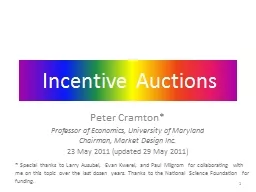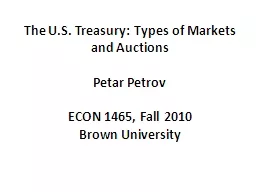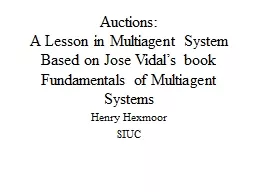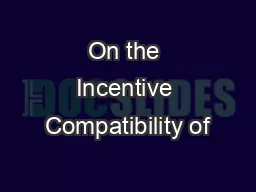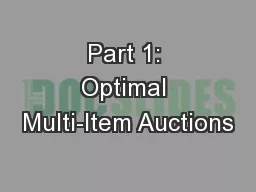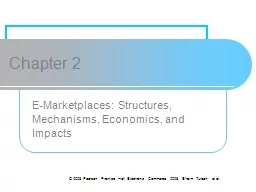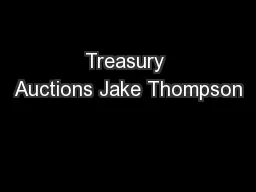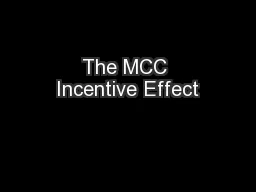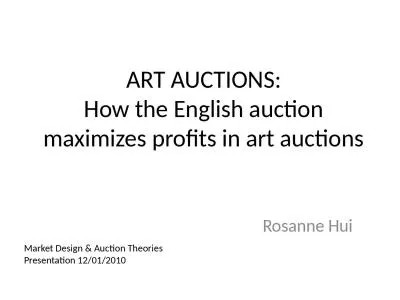PPT-Incentive Auctions
Author : debby-jeon | Published Date : 2016-07-02
Peter Cramton Professor of Economics University of Maryland Chairman Market Design Inc 23 May 2011 updated 29 May 2011 Special thanks to Larry Ausubel Evan Kwerel
Presentation Embed Code
Download Presentation
Download Presentation The PPT/PDF document "Incentive Auctions" is the property of its rightful owner. Permission is granted to download and print the materials on this website for personal, non-commercial use only, and to display it on your personal computer provided you do not modify the materials and that you retain all copyright notices contained in the materials. By downloading content from our website, you accept the terms of this agreement.
Incentive Auctions: Transcript
Download Rules Of Document
"Incentive Auctions"The content belongs to its owner. You may download and print it for personal use, without modification, and keep all copyright notices. By downloading, you agree to these terms.
Related Documents

